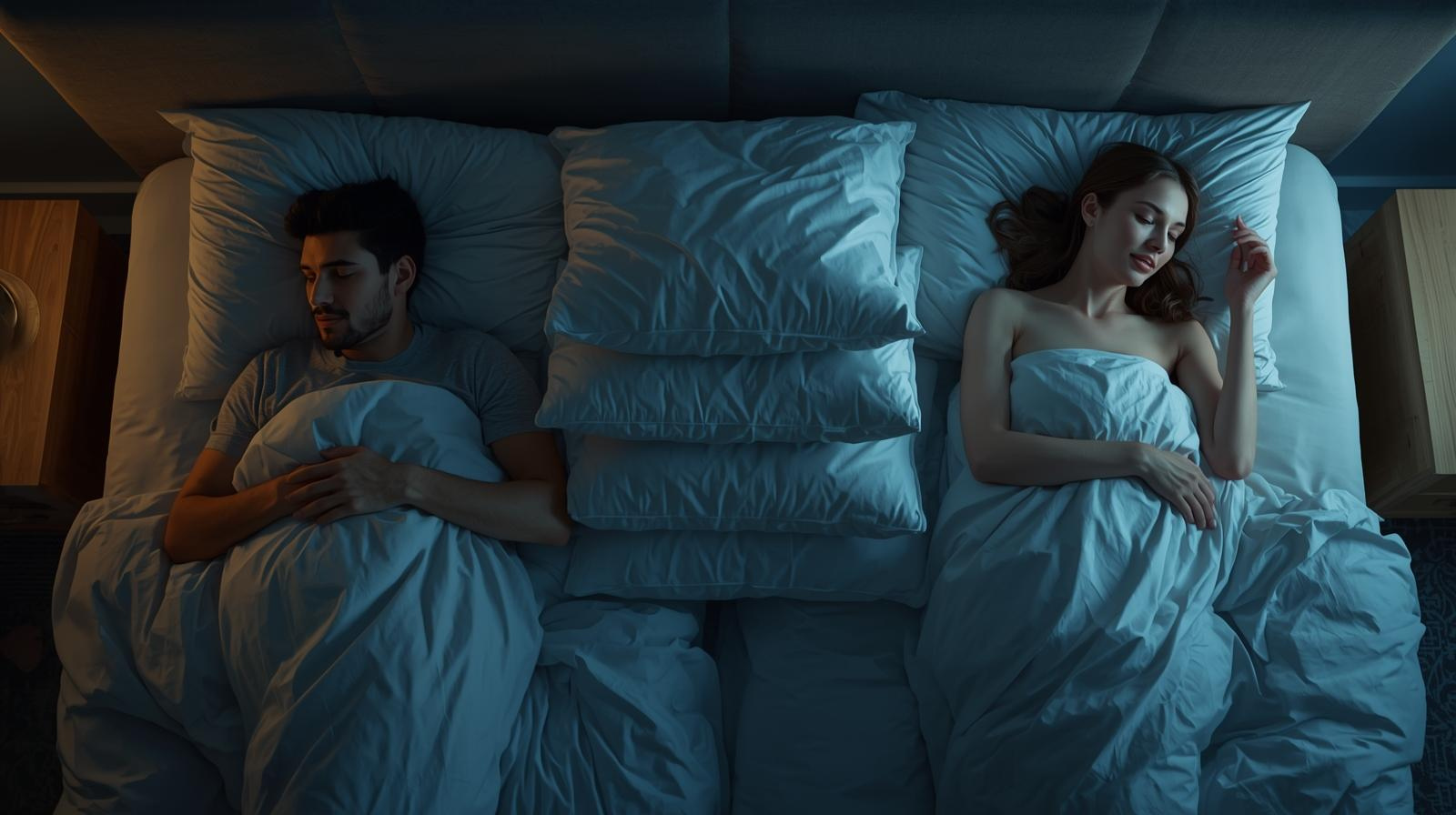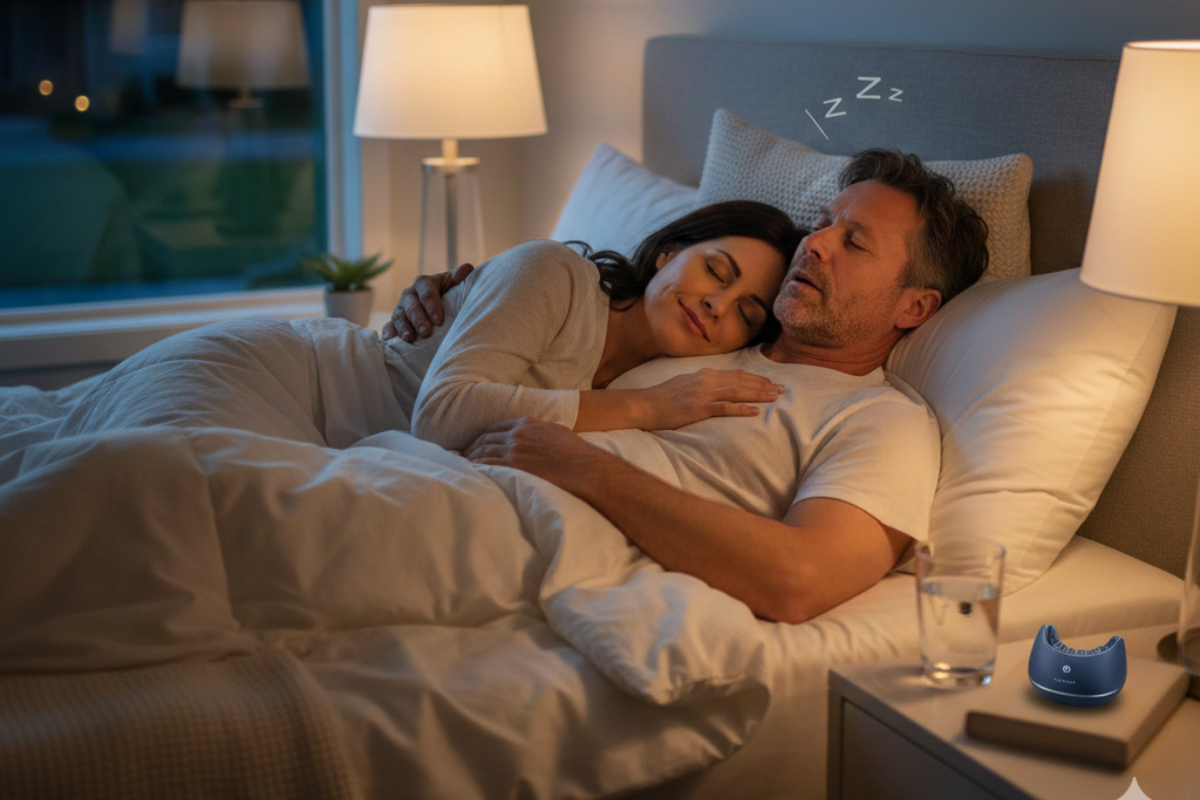Free Shipping - On Orders Over $99 (USA, Canada, UK, & AU)

9 Sleep Apnea Do’s and Don’ts
October 10, 2024 5 min read
Obstructive sleep apnea (OSA), or simply sleep apnea, is the most common sleep-related breathing disorder. It makes it difficult for sufferers to breathe during sleep, leading to low oxygen levels and unrefreshing sleep. If left untreated, sleep apnea can put you at risk of heart disease, type 2 diabetes, poor immune function, and depression.
If you’ve already been diagnosed with this condition, your doctor has likely already prescribed continuous positive airway pressure (CPAP) therapy, which is the most reliable method of treating sleep apnea. You’ve also likely been recommended lifestyle changes to improve your symptoms. It’s good to be reminded of what to do and not to do when you have a medical condition.
Here are 9 do’s and don’ts when you have sleep apnea.
1. Do Be Consistent With CPAP Therapy
For CPAP therapy to work, consistency is key. This means using your CPAP machine every night for at least 7 hours each night. Consistent use of CPAP machines ensures your oxygen levels remain optimal through the night and that the quality of your sleep doesn’t suffer.
But for many, CPAP machines are uncomfortable, claustrophobic, and loud. Studies show that up to 34% of CPAP users fail to adhere to CPAP therapy [1].
2. Don’t Drink Alcohol or Smoke
Quitting drinking and smoking is always good for health, but it can be particularly important if you have sleep apnea. Alcohol and tobacco can both affect the upper airways. Alcohol, being a depressant, causes excessive muscle relaxation that can lead to airway obstruction. Tobacco can irritate the airways, causing their swelling and obstruction.
There’s also research evidence that those who regularly drink and smoke are more likely to develop sleep apnea [2, 3]. This is why experts advise against these unhealthy habits if you’re trying to manage or prevent this condition.
3. Do Try to Lose Weight If Overweight
Not everyone with sleep apnea is overweight, but those who are can benefit from weight loss. Some cases of sleep apnea are the result of excess weight in the neck area. In such cases, even modest weight loss of 7-11% was found to greatly improve OSA symptoms [4]. In some cases, greater weight loss leads to remission.
Unfortunately, losing weight when you have sleep apnea can be hard. Many sleep apnea patients are frequently fatigued and their metabolism and energy levels are affected by their condition.
4. Don’t Sleep on Your Back
More than half of all sleep apnea patients are back sleepers [5]. The problem with back sleeping is that soft tissues in the upper airways, like the back of your tongue and soft palate, can collapse easily thanks to gravity.
When sleep apnea is solely due to sleeping in the supine position, switching to a side-sleeping position may be the only treatment needed to reduce symptom severity. A 2015 study involving 27 patients with sleep apnea found that their AHI score dropped from 23 to 7 [6].
Changing your sleeping position may take some practice, however. Try placing pillows behind you to gradually train yourself to make this change.
5. Do Practice Good Sleep Hygiene
Sleep hygiene refers to all those habits that promote good sleep. These include sticking to a sleep schedule, limiting screen time at night, creating a cool and quiet sleep environment, etc.
While good sleep hygiene may not have a direct effect on sleep apnea symptoms, it can further help in getting good quality sleep [7]. Many sleep apnea sufferers struggle to get refreshing sleep, and these habits can prove to be helpful. Plus, good sleep hygiene will make it more likely for you to stick to CPAP therapy.
6. Don’t Ignore Uncomfortable CPAP Masks
Your CPAP mask needs to fit snugly and feel relatively comfortable for this treatment to work properly and for you to avoid complications, like skin irritation, sores, and dry airways. If you feel like your CPAP mask is too large, too small, or generally not the right fit for you, speak to your doctor so you can get a mask or alternative that fits properly.
If you tend to develop a dry mouth when using your CPAP machine, you may just need a chin strap to keep your mouth closed during sleep. A CPAP machine with an air humidifier feature can also help.
7. Do Try to Exercise Regularly
Besides being helpful for weight loss, being physically active can reduce sleep apnea severity. A meta-analysis of 5 studies with 6 cohorts and 129 participants found that regular exercise significantly reduced the severity in OSA symptoms even when it did not result in weight loss [8]. Additionally, the participants reported improved sleep and had better cardiovascular fitness.
One way exercise helps is by increasing upper airway muscle tone. Weak airway muscles make it more likely for soft tissues there to collapse, so exercising makes sense when addressing sleep apnea.
8. Don’t Avoid Other Symptoms
Sleep apnea can lead to a host of health problems, especially if not treated early. Hypertension, obesity, type 2 diabetes, heart attack, stroke, and depression are just some of its potential complications. If you have sleep apnea, it’s important to get screening for these conditions.
If you are noticing changes in how you feel, your energy levels, your weight, and your ability to function, it may be a good idea to speak to your doctor about screening and treatment.
9. Do Consider Oral Appliances
CPAP therapy is notoriously hard to adhere to. But it’s not wise to forgo treatment completely just because this solution hasn’t worked for you. The American Academy of Sleep Medicine (AASM) and the American Academy of Dental Sleep Medicine (AADSM) recommend oral appliance therapy as an alternative to those who are unable to adhere to CPAP therapy and those with mild to moderate OSA [9].
Oral appliances include mandibular advancement devices and tongue-stabilizing devices. These medical devices hold mouth structures in place to prevent the tongue from collapsing into the back of the throat. The Good Morning Snore Solution is a tongue-stabilizing device clinically proven to stop snoring and it may be helpful for mild cases of OSA.
References:
- Rotenberg BW, Murariu D, Pang KP. Trends in CPAP adherence over twenty years of data collection: a flattened curve. J Otolaryngol Head Neck Surg. 2016;45(1):43. Published 2016 Aug 19. doi:10.1186/s40463-016-0156-0
- Simou E, Britton J, Leonardi-Bee J. Alcohol and the risk of sleep apnoea: a systematic review and meta-analysis. Sleep Med. 2018;42:38-46. doi:10.1016/j.sleep.2017.12.005
- Jang YS, Nerobkova N, Hurh K, Park EC, Shin J. Association between smoking and obstructive sleep apnea based on the STOP-Bang index. Sci Rep. 2023;13(1):9085. Published 2023 Jun 5. doi:10.1038/s41598-023-34956-5
- Tham KW, Lee PC, Lim CH. Weight Management in Obstructive Sleep Apnea: Medical and Surgical Options. Sleep Med Clin. 2019;14(1):143-153. doi:10.1016/j.jsmc.2018.10.002
- Joosten SA, O'Driscoll DM, Berger PJ, Hamilton GS. Supine position related obstructive sleep apnea in adults: pathogenesis and treatment. Sleep Med Rev. 2014;18(1):7-17. doi:10.1016/j.smrv.2013.01.005
- Bidarian-Moniri A, Nilsson M, Rasmusson L, Attia J, Ejnell H. The effect of the prone sleeping position on obstructive sleep apnoea. Acta Otolaryngol. 2015;135(1):79-84. doi:10.3109/00016489.2014.962183
- Guedes Bahia M, Soares V, Carlos Winck J. Impact of sleep hygiene on patients with obstructive sleep apnoea syndrome. Rev Port Pneumol. 2006;12(2):147-176. doi:10.1016/s2173-5115(06)70394-3
- Iftikhar IH, Kline CE, Youngstedt SD. Effects of exercise training on sleep apnea: a meta-analysis. Lung. 2014;192(1):175-184. doi:10.1007/s00408-013-9511-3
- Oral appliance therapy clinical guideline published jointly by AASM and AADSM. American Academy of Sleep Medicine. Published July 16th, 2015.
https://aasm.org/oral-appliance-therapy-clinical-guideline-published-jointly-by-aasm-and-aadsm/
Also in Blog

Healthy Sleep Goals For 2026
December 22, 2025 6 min read

💨 Are Your Nighttime Breathing Issues Robbing You of Your Health and Your Energy?
December 12, 2025 3 min read
Breathing issues during sleep, collectively known as sleep-disordered breathing, are a major public health concern.

Is Your Snoring a Sign of Something More Serious? Unpacking the Science of Sleep
December 05, 2025 3 min read
When you snore, what's actually happening?
Join our Insiders Club
Every week you will receive specials, discounts, and giveaways.
Categories
- Better Sleep
- depression
- Fitness
- funny animal
- Global Citizenship
- health
- Mental Health
- mouthpiece
- nutrition
- pillow
- Productivity
- relationships
- sleep
- sleep apnea
- sleep deprivation
- Sleep Tech
- snoring
- snoring humor
- snoring jokes
- snoring sounds
- stop snoring
- StopSnoringStartLiving
- technology
- Tongue displacement
- travel
- video
- Young Adult

